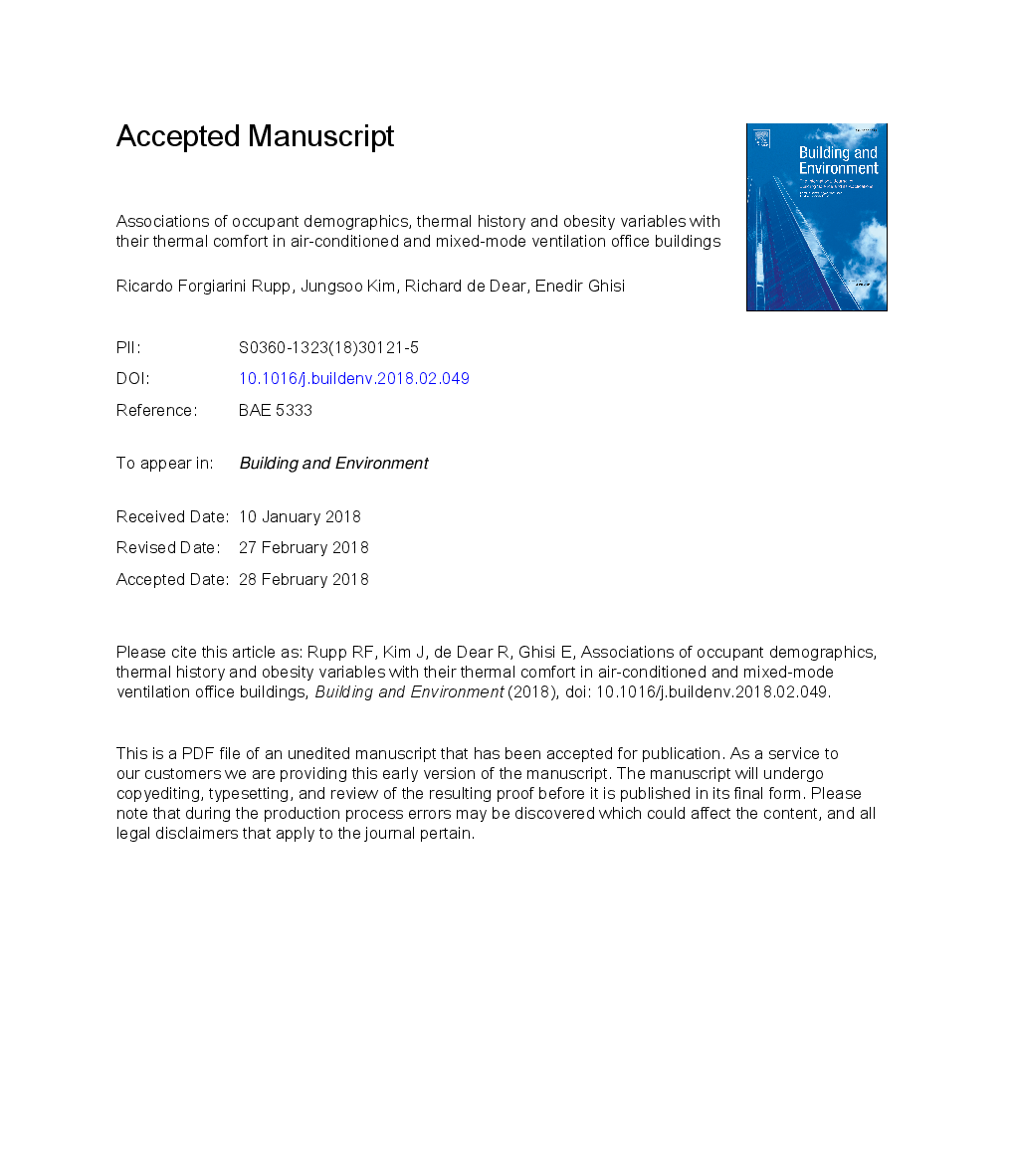ترجمه فارسی عنوان مقاله
انجمن جمعیت شناسی، تاریخچه حرارتی و متغیرهای چاقی با راحتی حرارتی آنها در ساختمان های تهویه مطبوع و مخلوط حالت
عنوان انگلیسی
Associations of occupant demographics, thermal history and obesity variables with their thermal comfort in air-conditioned and mixed-mode ventilation office buildings
| کد مقاله | سال انتشار | تعداد صفحات مقاله انگلیسی |
|---|---|---|
| 125811 | 2018 | 21 صفحه PDF |
منبع

Publisher : Elsevier - Science Direct (الزویر - ساینس دایرکت)
Journal : Building and Environment, Volume 135, 1 May 2018, Pages 1-9
ترجمه کلمات کلیدی
راحتی حرارتی انسان، جنسیت، چاقی، تاریخ حرارتی، ساختمان های مخلوط،
کلمات کلیدی انگلیسی
Human thermal comfort; Gender; Obesity; Thermal history; Mixed-mode buildings;

